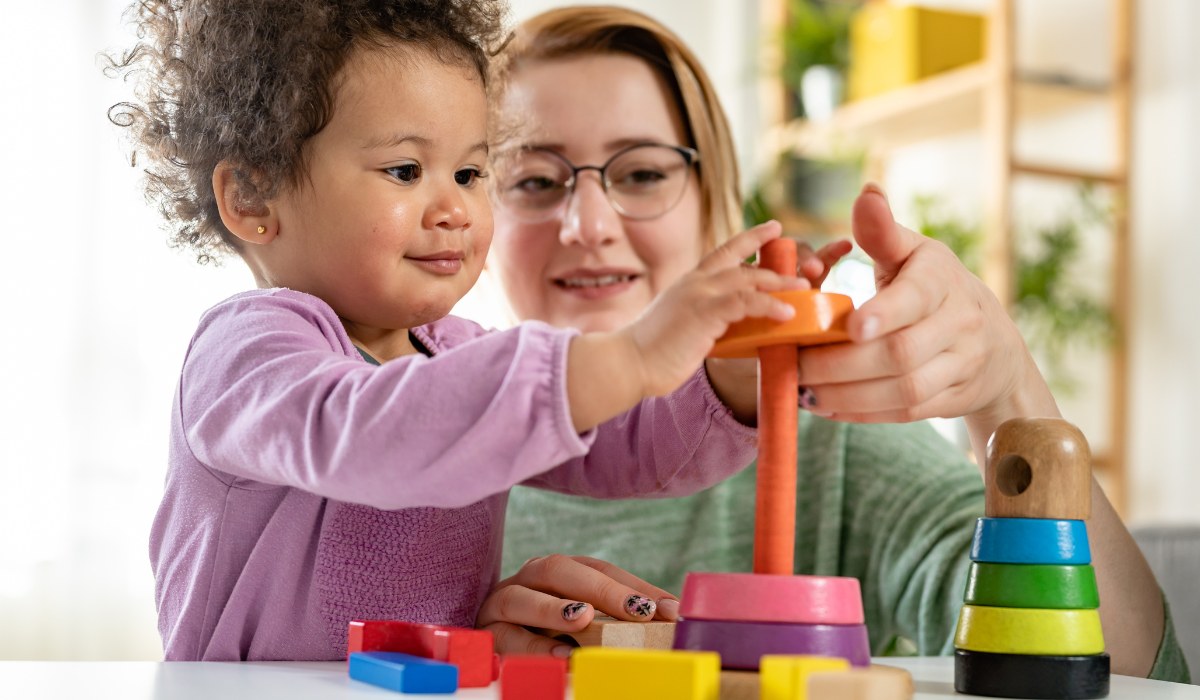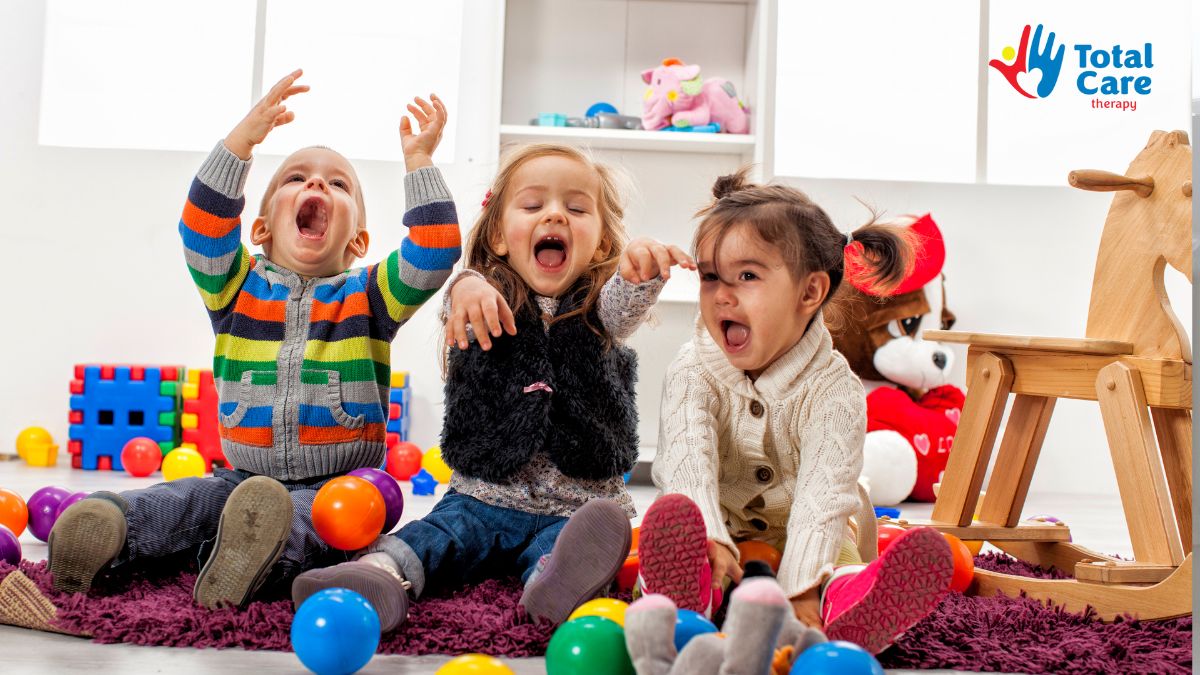Exploring the Benefits of Animal Therapy in Autism
Harnessing the Healing Power of Animals for Autism Support

Understanding Animal-Assisted Interventions in Autism
Animal-assisted therapy (AAT) and animal-assisted interactions (AAI) are increasingly recognized as valuable adjuncts to traditional autism treatments. By integrating animals like dogs, horses, and small pets into therapeutic settings, these interventions aim to foster social, emotional, and physical development. This article explores how animal therapy benefits individuals with autism, the scientific evidence supporting its effectiveness, underlying mechanisms, and practical considerations for implementation.
How Animal-Assisted Therapy Supports Individuals with Autism
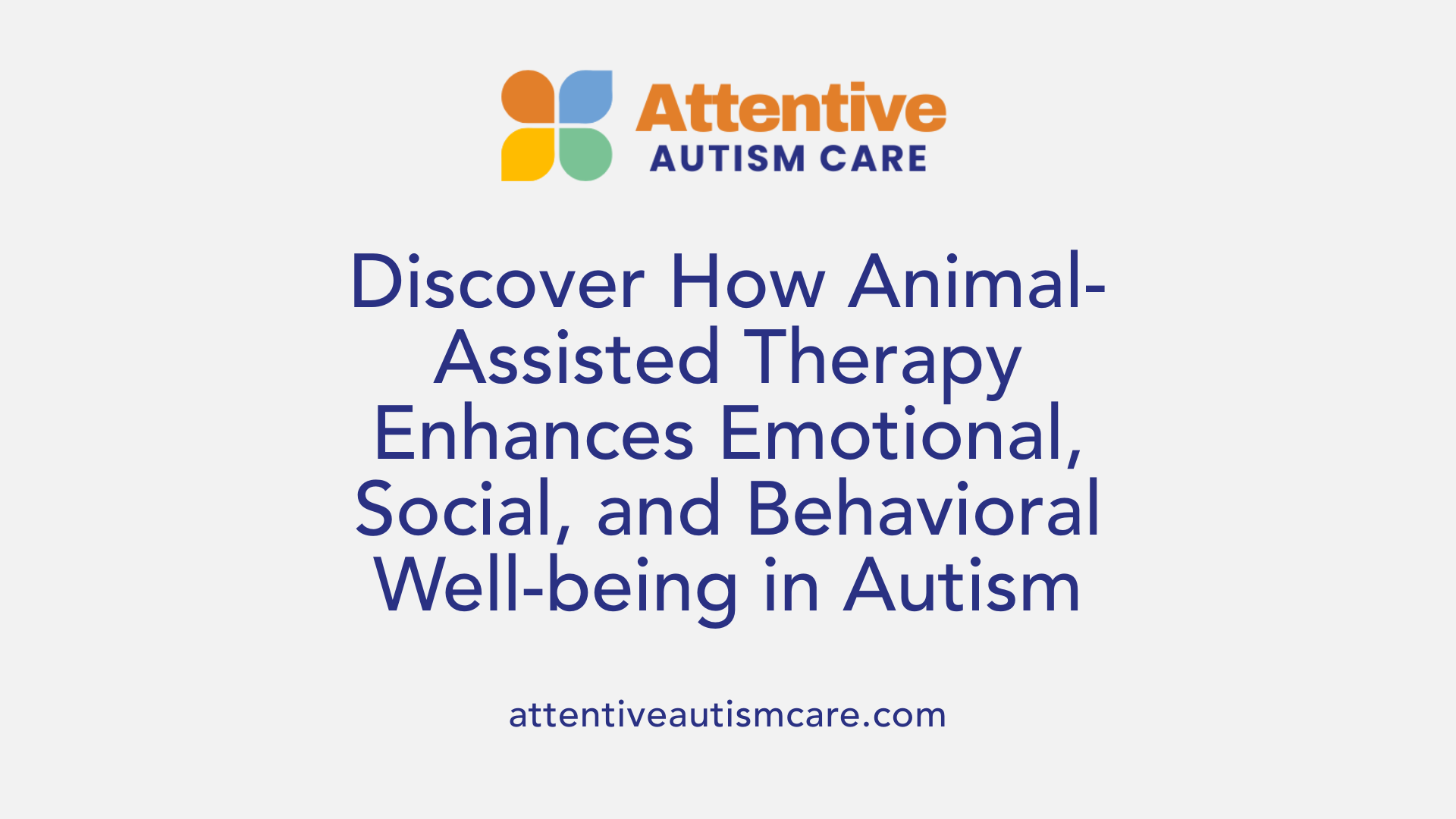
How does animal-assisted therapy benefit individuals with autism?
Animal-assisted therapy (AAT) offers a variety of physical, sensory, and emotional benefits that can significantly improve the lives of those with autism. Interacting with animals such as dogs, horses, and small pets provides comfort and stimulation, aiding in emotional regulation and stress reduction.
One of the prominent advantages of AAT is its ability to foster improvements in social engagement and communication. These interventions encourage individuals to initiate and maintain interactions, which can enhance social skills and empathy.
Behavioral regulation is also positively impacted. Activities involving animals often help decrease irritability, hyperactivity, and emotional outbursts, leading to calmer behaviors and more manageable responses in everyday settings.
The calming effects of animal interaction are well-documented. AAT helps lower anxiety and stress levels, thanks to the release of mood-enhancing hormones like oxytocin and serotonin during these interactions. Sensory responses are better organized, which can minimize sensory overloads and meltdowns.
Beyond immediate emotional benefits, AAT contributes to building self-confidence and acceptance. Many children develop a stronger sense of trust and social motivation, feeling more willing to participate in social situations and form meaningful connections.
Although scientific research continues to grow, anecdotal reports and preliminary studies strongly suggest that integrating animal-assisted interventions can lead to noticeable improvements in emotional well-being, social participation, and behavioral control for individuals with autism. Families and clinicians are increasingly recognizing AAT as a valuable complement to traditional therapies, supporting a holistic approach to autism care.
Scientific Evidence Supporting the Use of Animal Therapy for Autism

Is there research evidence supporting the effectiveness of animal therapy for autism?
Research into animal-assisted interventions (AAI) for autism spectrum disorder (ASD) suggests promising benefits, although scientific validation is still evolving. Numerous studies point to positive effects on social skills, emotional regulation, and reducing feelings of loneliness among children and adults with autism.
Empirical research has demonstrated that interactions with animals like dogs, horses, and small pets can help individuals explore social cues and build connections. For example, tools such as the Social Responsiveness Scale (SRS) have documented gains in social communication and engagement following animal-assisted therapy sessions.
Systematic reviews and meta-analyses of multiple studies support these findings, highlighting improvements such as increased motivation to interact, better emotional control, and reduced stress levels. Participants often report a sense of safety, acceptance, and increased self-confidence, which can translate into more positive social interactions outside therapy settings.
Nevertheless, while the overall evidence points to beneficial outcomes, current research faces limitations. Many studies lack rigorous controls such as comparison groups or sufficient sample sizes. Additionally, variability in therapy models and participant demographics makes it difficult to generalize results.
Despite these challenges, the consistent anecdotal and preliminary scientific data strongly indicate that animal therapy can serve as an effective complement to traditional autism treatments. Further validation through high-quality, standardized research is essential to firmly establish guidelines and best practices.
| Aspect | Findings | Notes |
|---|---|---|
| Social skill improvement | Significant gains in social interaction and communication | Measured through tools like the SRS |
| Emotional regulation | Reduction in anxiety and irritability | Examples from clinical observations |
| Physiological effects | Lowered cortisol, increased oxytocin | Biological impact of animal contact |
| Behavioral changes | Reduced hyperactivity, increased calmness | Reported by caregivers and therapists |
| Research limitations | Small sample sizes, lack of controls | Need for more rigorous studies |
Overall, animal therapy shows promising potential for enhancing the lives of individuals with autism, but more scientifically rigorous research is needed to translate these findings into standardized practice.
Mechanisms Behind the Effectiveness of Animal-Assisted Interventions
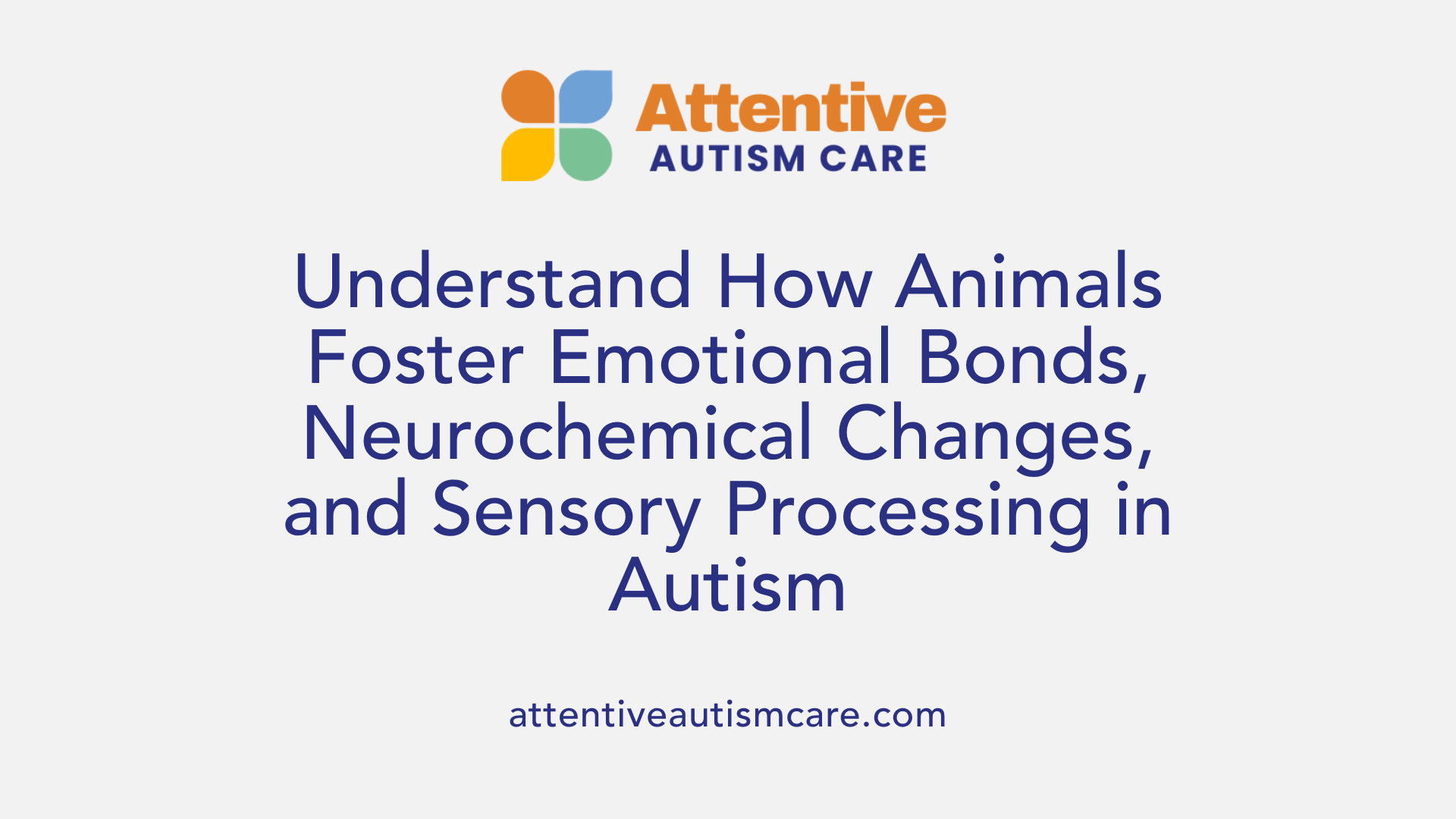
How do animals help individuals with autism?
Animal-assisted therapy (AAT) works through several interconnected mechanisms that make it especially beneficial for children with autism.
Firstly, animals foster emotional bonding and trust. Interactions with animals create a sense of safety and acceptance, helping children feel valued and understood. This emotional connection can reduce feelings of loneliness and anxiety, making children more receptive to social interactions.
Secondly, neurochemical changes play a significant role. During interactions, levels of oxytocin, known as the 'bonding hormone,' increase, promoting feelings of calm and attachment. Simultaneously, cortisol levels, which are associated with stress, tend to decrease, helping children manage anxiety and emotional distress.
Thirdly, animals provide rich sensory stimulation. Touching, grooming, or simply observing animals can enhance sensory processing. These interactions also facilitate social and communication skills, offering a non-judgmental medium through which children can practice engagement.
Moreover, personalized strategies—like tailoring activities to individual preferences and using reinforcement—boost motivation and maintain engagement with therapy. Animals serve as honest feedback providers and social facilitators, encouraging positive interactions and emotional growth.
By combining these physical, emotional, and sensory elements, animal-assisted interventions build resilience, improve social functioning, and help children better regulate their emotions, making this approach a promising complement to traditional therapies.
Supporting Emotional and Social Regulation Through Animal Interaction
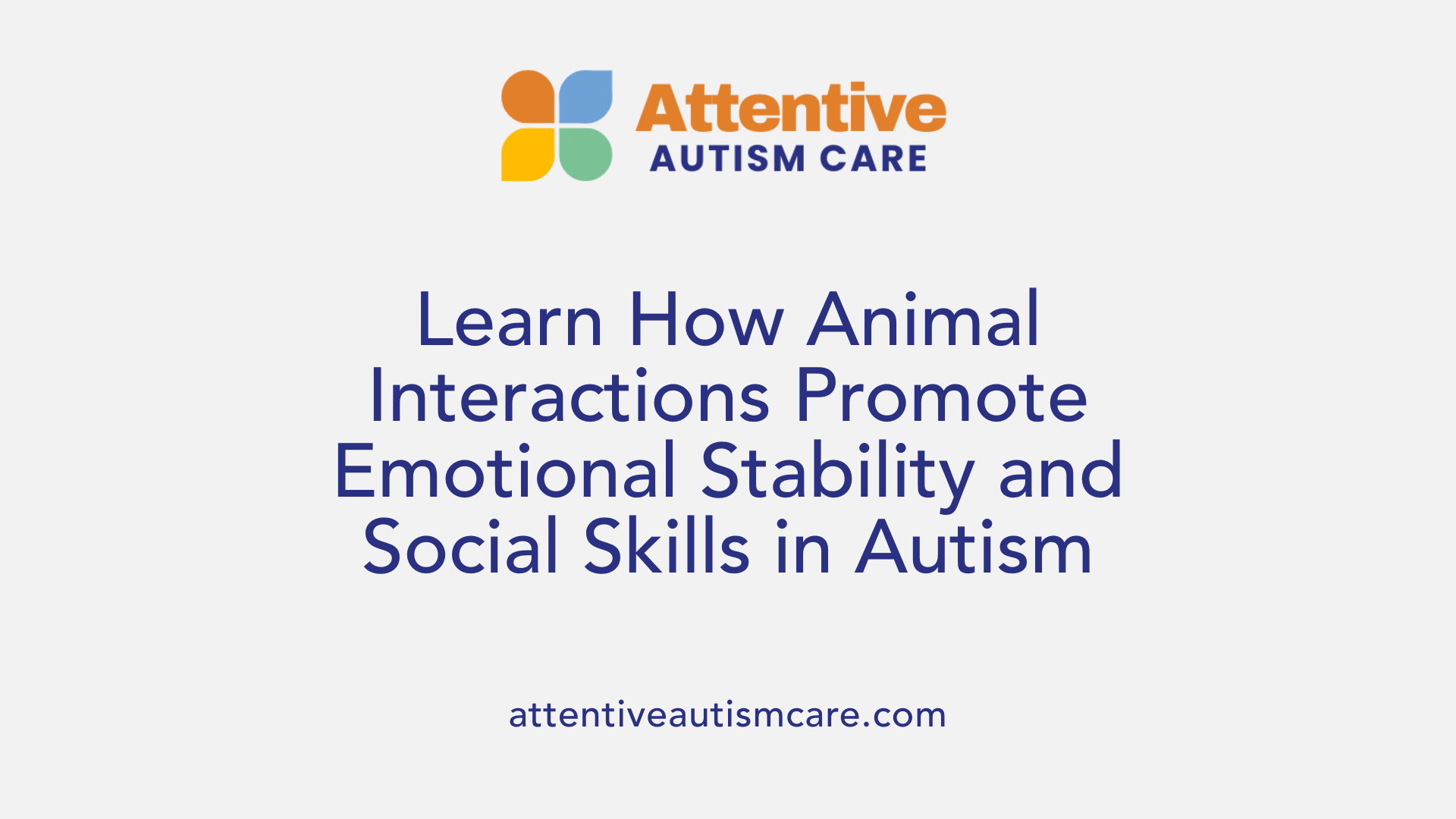
How does animal-assisted therapy aid in emotional regulation for individuals with autism?
Animal-assisted therapy (AAT) has proven to be a valuable approach in promoting emotional stability in individuals with autism. When trained animals such as dogs or horses are involved, they provide calming companionship and sensory input that help reduce feelings of anxiety and prevent emotional outbursts.
Interaction with animals encourages socialization and nurtures prosocial behaviors. For children with autism, these interactions serve as a non-threatening way to develop effective coping strategies, making emotional regulation more attainable.
Both children who communicate verbally and those who do not can benefit from engaging with animals during therapy sessions. These interactions improve their ability to manage emotions and respond more calmly to stressful or challenging situations.
Furthermore, animals increase social motivation by creating positive, engaging environments that reward calm behavior and foster a sense of trust.
Research shows that integrating animals into therapy leads to long-term improvements in emotional regulation and social skills, supporting better daily functioning and emotional health for individuals with autism.
Practical Considerations and Safety in Applying Animal Therapy for Autism
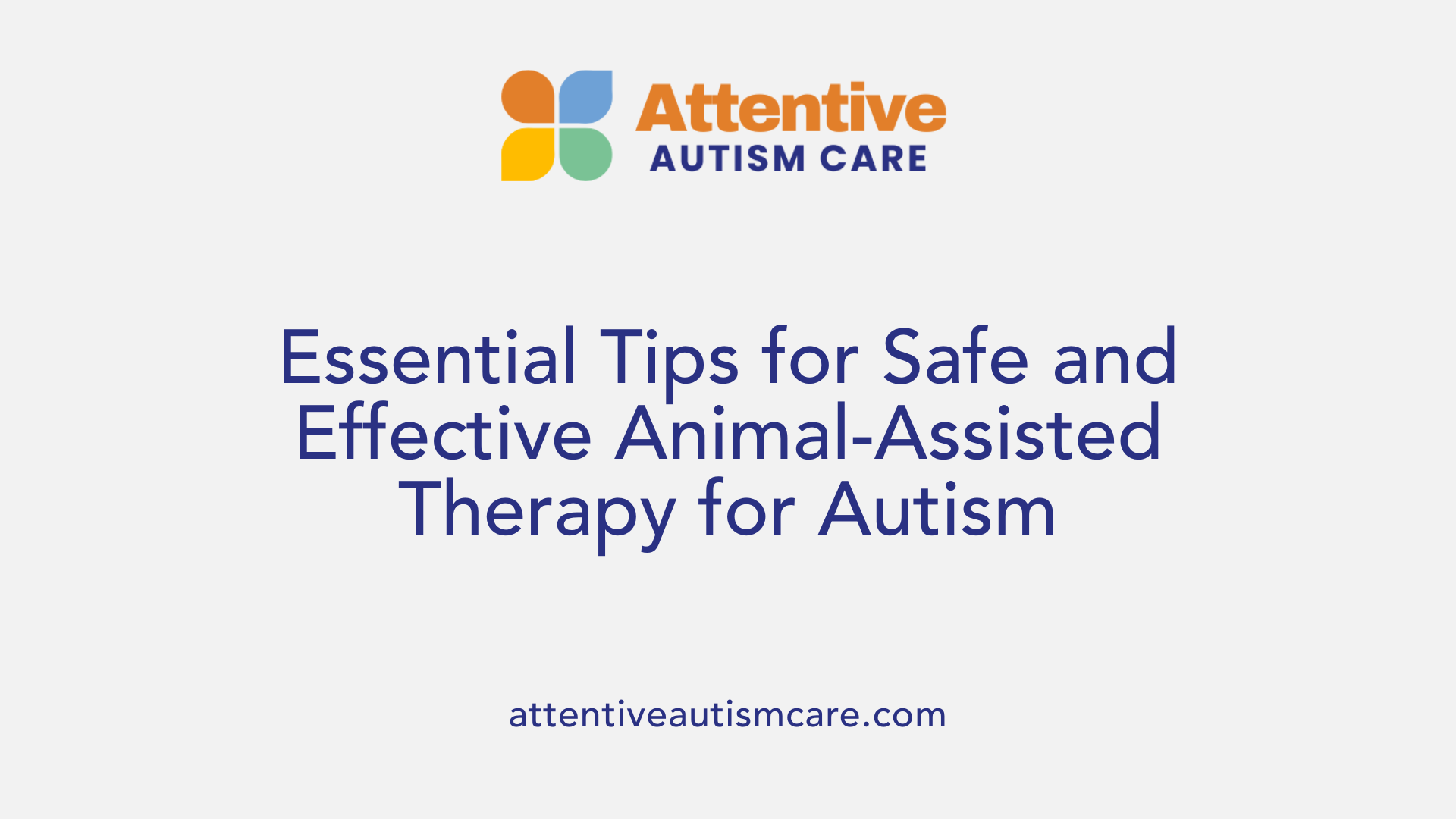
What are important considerations when applying animal-assisted therapy for individuals with autism?
When implementing animal-assisted therapy (AAT) for individuals with autism, several practical factors ensure safety and efficacy. First, selecting animals suited to the individual's sensitivities and preferences is vital. Conducting preference assessments helps determine which type of animal may serve as an effective reinforcer and emotional support.
Creating a sensory-friendly environment minimizes sensory overload, making interactions more comfortable. It's essential to establish safety protocols, including hygiene practices and safe handling procedures, to protect both the participants and the animals involved.
The presence of trained professionals, such as therapists and handlers, is crucial for assessing and monitoring responses during sessions. Their expertise ensures that interventions are tailored to individual needs and that any adverse reactions are promptly addressed.
Animal welfare must be prioritized. This includes ensuring animals are well-trained, healthy, and not subjected to stressful situations, reducing the risk of triggers that could cause agitation or meltdowns in individuals with autism.
An individualized approach is recommended, considering each person's social, emotional, and sensory profile. Various therapy models, like client-centered or structured approaches, can be adapted to fit unique needs.
Finally, continuous evaluation of progress helps measure the impact of AAT. Adjustments can be made based on observed outcomes, maintaining a focus on holistic development. While AAT offers benefits such as improved social interaction and emotional regulation, it should complement other therapies within a comprehensive treatment plan.
Integrating Animal Therapy Into Autism Treatment Strategies
Animal-assisted therapy offers a promising complementary approach for improving social, emotional, and behavioral outcomes in individuals with autism. While scientific evidence continues to grow, careful implementation, ongoing assessment, and adherence to safety standards are essential to maximize benefits. By fostering trust, emotional regulation, and social motivation, animal therapy can significantly enrich the lives of those on the autism spectrum, opening new pathways toward greater independence and quality of life.
References
- Exploring the Benefits of Animal-Assisted Interactions
- Exploring the Benefits of Animal-Assisted Interventions for ...
- An Evaluation of Animal-Assisted Therapy for Autism ...
- Animal-Assisted Therapy Research
- Animal Interventions in Autism
- An Evaluation of Animal-Assisted Therapy for Autism ...
- Animal Interventions in Autism












